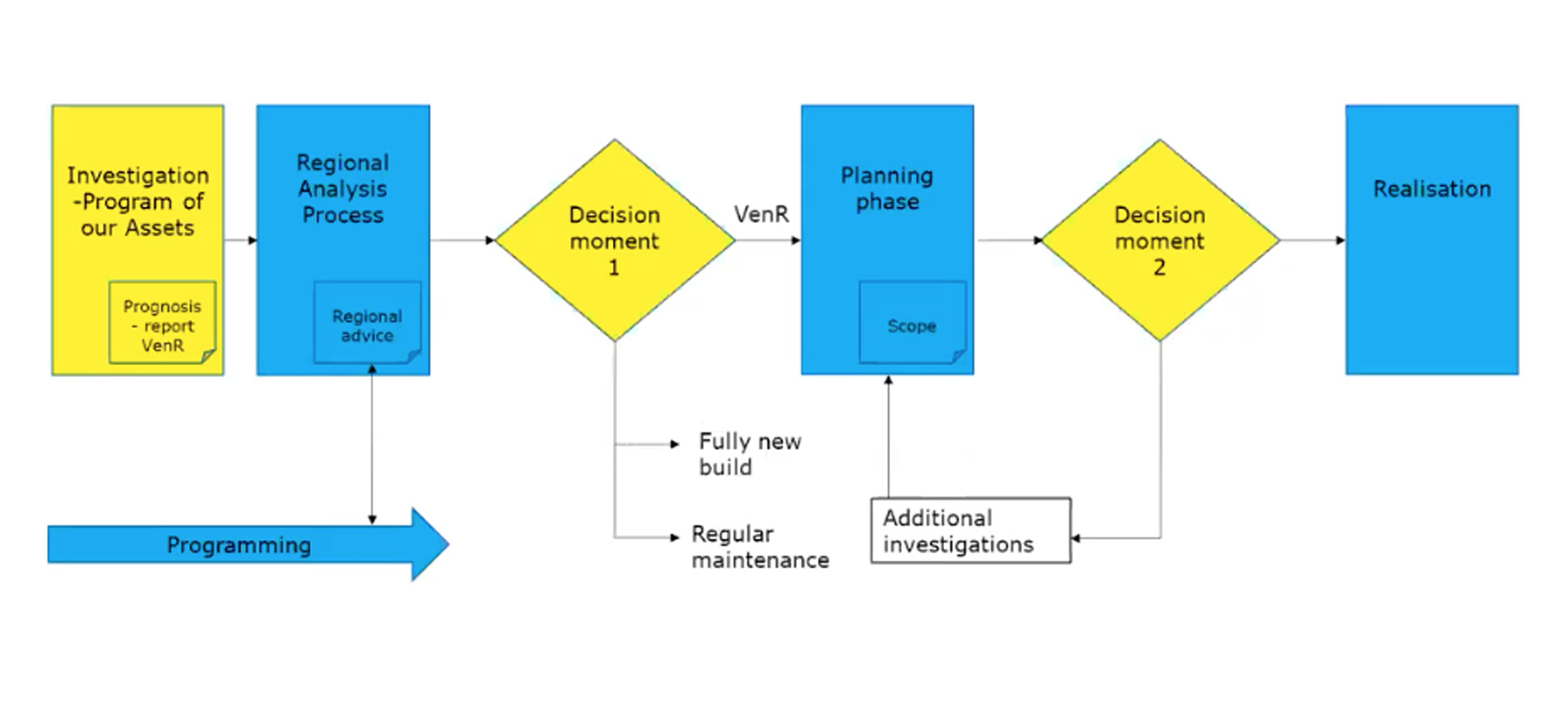In a clip from a recent LEI webinar, a Dutch Ministry of Infrastructure advisor shares how this 9,000-person organization works together to understand and deliver what their customers value in waterway and roadway infrastructure. Find a lightly edited transcript below.
I can only emphasize this to all of you who are part of corporate: go to where your customer is. So, together with the people and also our customers, we organized multiple series of kaizens. See one here with the brown paper. All the people, [contributed to] what is it that we need to have and what should be our process to get there. And what we did is: the departments that wanted a new object as soon as possible, we put together in front of the brown paper, because it’s the departments that are responsible for finding the sustainable solutions. So we put them in one room. And what we try to do is to design customer value together and meet each other in the process and design a common process.
That was not an easy task. It was not an easy task. And people even got emotional doing that. But, I think we got there.
It was easier said than done, and there’s no wrong or right in this. Everybody is right, and all are willing to deliver optimal customer value, talk to customers, and understand what the customer wants. So as an organization, we talked, we learned to talk about the process together. We did it shoulder to shoulder, so we learned that it’s much better to talk about the process than to talk to each other. And that’s a big, psychological difference.
We needed to find a way to travel the journey together. And that’s what I would like to tell you a little bit more. Of course, we did PDCA, PDCA [Plan-Do-Check-Act] all the time. It sounds easy, but in reality, it is difficult. That means that you have to go back to the customer and ask, “What do we really want?” We have a lot of superior knowledge. And we have people that love extreme engineering that you’ve seen in the movie about all the different storm surge barriers we have. And we love to do this. But, we need to make sure that we do this extreme engineering in relation to what the customer wants.
So what we did, we created a team—the team I lead together with my colleague—where all these people … are a part. And we said, “OK, what are our goals?
You can see, in the little circle, the goals are in the middle, and then who are stakeholders and who do we need to talk to?
So we created a communication scheme, [so we] talked to our stakeholders, and we talked to our customers on a regular basis. And this communication scheme, this little thing in the middle here, is one of the things that’s been critical to success. And of course, with our teams, we had visual management and the weekly team meeting. By the way, when Covid hit us, we changed quite fluently to working on Microsoft teams.
So, one of the results of these kaizen series was a process on brown paper that we would like to do for the future.
Well, the challenge we have, we have 9,000 people, and around 3,000 are working in our process. The challenge is to have one way of communicating with these people. So what we did is we have a clickable process view; it looks like a very simple process overview, but you can click on it, and it expands. And on many layers of information, there are layers with best practices, all the necessary forms, and documents, which we designed together with the responsible departments. And this clickable process view, made by three ladies on my team: that was an absolute turning point and toward organization-wide access.
Get Started With LPPD Now
Learn how to accelerate the delivery of new products and services that customers want. Learn more and sign up now for Designing the Future Remotely, an online workshop led by LPPD Coaches Katrina Appell and John Drogosz.
Designing the Future
An Introduction to Lean Product and Process Development.





